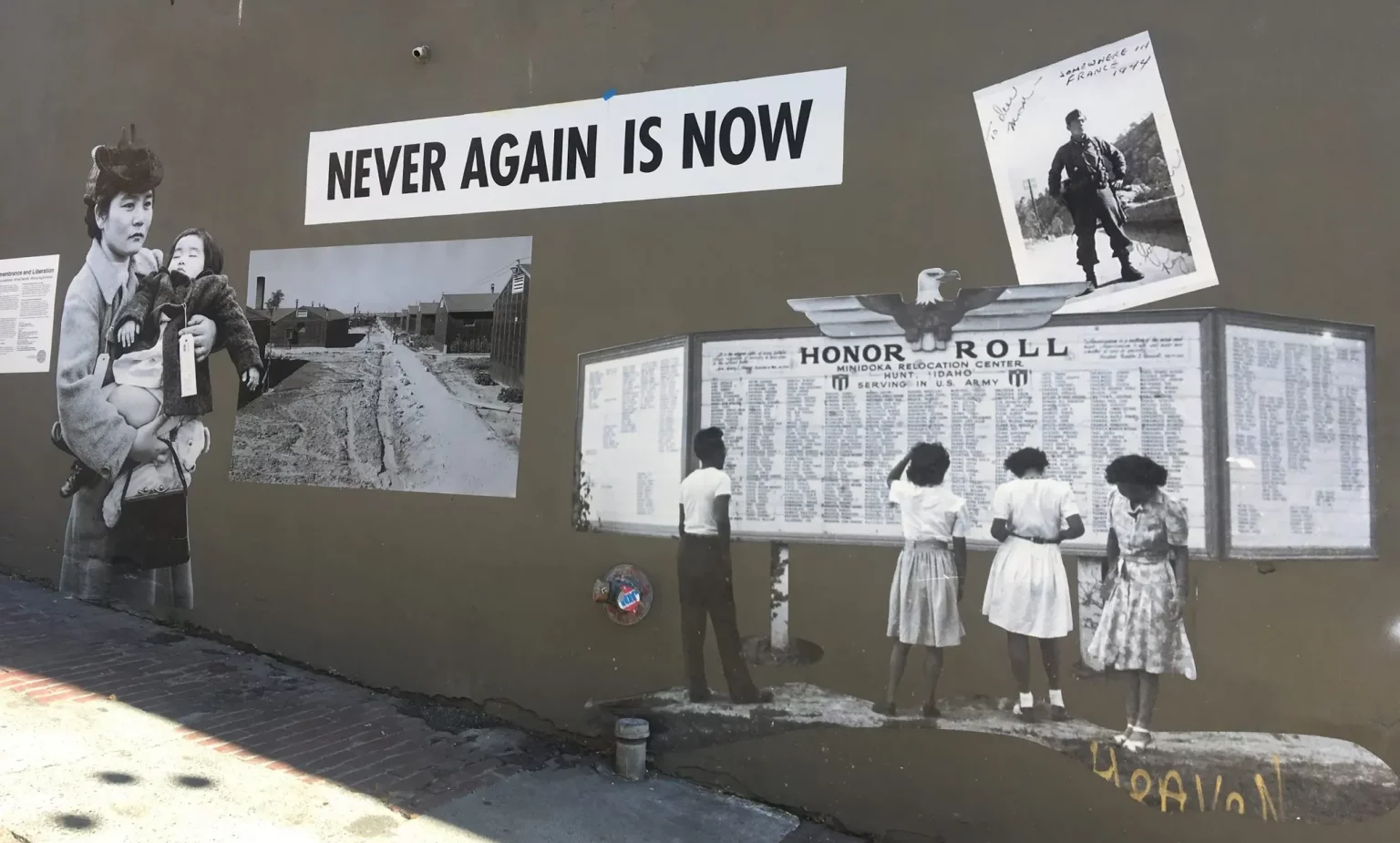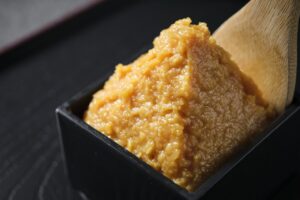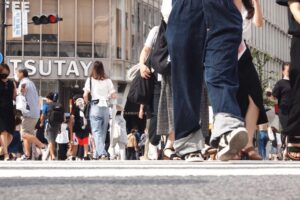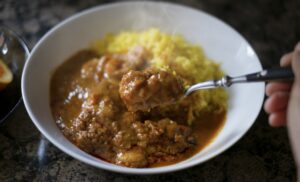Looking Back to the Past: Re-examining Seattle’s Once Vibrant Japantown

Seattle’s Chinatown-International District (CID) was once home to the largest Japantown in North America and remains to be one of the most historically significant places for Japanese Americans. In the 1880s, the first wave of Japanese laborers arrived in the Northwestern United States and undertook hard labor to build railroads, sawmills, and farms. Amid the prewar global population growth, by 1930, 8,500 Japanese Americans were living in what is known as the CID today.
The district was home to Japanese language schools, newspaper offices, religious institutions, and dojos, which represented Japanese culture and became known as Japantown. The streets were filled with lodgings, restaurants, and stores run by Japanese American owners. In the wake of the Sino-Japanese War in 1937, it became less prosperous, and more people returned to Japan. However the Japanese Americans were the largest minority group in Seattle in 1941, and Japantown was the second-largest Japanese American community on the West Coast.
On December 8, 1941 (December 7 in local time), the Japanese military attacked Pearl Harbor in Hawaii, plunging both countries into the Pacific War. The lives of Japanese Americans were upended as President Roosevelt issued Executive Order 9066, which declared more than 120,000 people of Japanese descent, including U.S. citizens, to be “alien enemies” and deported them to internment camps. The residents of Seattle’s Japantown were forced to abandon all their land and property and left Japantown only with suitcases in their hands.

During the period of internment, Seattle’s economy grew rapidly due to the demand for military aircraft, which led to rapid population growth. The areas that had formerly housed Japanese Americans were transformed, and many of them who returned to Japantown from the internment camps after the war ended up moving to other cities. As a result, the number of stores owned by Japanese Americans decreased gradually.
In 1951, William F. Devin, then mayor of Seattle, renamed the district the “International Center” to reflect the diversity in residents, which included African-Americans, Japanese, Chinese, and Filipinos. The name stuck for a while. In the 1980s, Seattle welcomed thousands of new immigrants from Vietnam, Laos, and Cambodia, who settled and established businesses in the Rainier Valley, south of the district. Today, the 12th Street and Jackson Street area is known as “Little Saigon.” Eventually, the neighborhood was renamed CID in 1998 after years of protests by those who feared that the term “international” would undermine the history of the Chinese community that settled in the area first.
Nestled Amidst a District that Mirrors the History of Immigration and Diversity
The CID can be divided into three main areas these days: “Little Saigon,” “Chinatown” around King Street, and “Japantown” on Main street where Japanese American stores and lodging facilities have been located since before the war.
While it is difficult to find a trace of the old Japantown today, several notable buildings still exist as they were in those days. One of them is the Higo Variety Store, a general merchandise store, which was opened by Sanzo Murakami in 1932. He immigrated to Seattle from Kumamoto in 1909. Today, the store is an art gallery and store, KOBO at Higo, selling arts and crafts that highlight Japanese craftsmanship.
The owners of KOBO are an American couple, Binko Chiong-Bisbee and John Bisbee. Binko’s father, originally from Taiwan, was educated in Japan and the U.S. He died when Binko was still an infant. Her mother, a Japanese American, was from California and spoke Japanese fluently. Binko was born in Tokyo and spoke Japanese as her first language. After her father passed away, the family moved to Seattle when she was six. She went to an elementary school in Japantown and remembers visiting the shops in the area including Higo Variety Store with her mother. She accompanied her mother to visit their relatives in Wakayama when they made trips to Japan. Their relatives from Japan would also visit them in Seattle. Her mother, who lived in Japan for 18 years, enjoyed art, often taking Binko to museums whenever they traveled to see their uncles and aunts in New York City and in California. Her mother also collected Japanese handmade pottery and folkcrafts from her visits to Japan which were art pieces that were used in the home.

When Binko moved to New York City to attend graduate school, she met John. He worked for an architectural firm in the city and the two decided to move to Tokyo for one year to learn more about Japan. One year turned into five years. John ended up working for a large Japanese architectural company which created opportunities to work on many large-scale projects. John with his deep knowledge of design and Binko’s interest in folk arts and ceramics, traveled extensively around Japan, meeting craftsmen, captivated by their craftmanship and process.
“We met so many people in Japan and made many friends. In the meantime, we began to understand what it meant to be a craftsman in Japan and we wanted to introduce their crafts to the Americans. In the U.S., if you were a craftsman, you probably started making your crafts only after a few years of practice. However, in Japan, you start as an apprentice to a craftsman. The first task is cleaning the studio and taking care of peripheral matters other than the craft itself. It takes a long time until you are allowed to create something. For example, you may start with making one shape for many years. Once you master the skills to make that shape perfectly, you are allowed to move on to making a different shape.”
Binko cherished the experience of interacting with the craftsmen in Japan. She could also use her Japanese again and grew closer to her roots. She still remembers vividly how the craftsmen welcomed her warmly into their studios.

Striving to be Different by Presenting Japanese Culture that is Unexpectedly Fun and Exciting
KOBO gallery and shop features everything from traditional Japanese crafts to goods inspired by contemporary culture. In addition, the store features work by artists from the Pacific Northwest who are inspired or influenced by Japan. The store’s appeal lies in its unconventional approach to curating a wide range of work. Binko says, “It’s not about whether it may sell or not. Mostly, it’s my instinct. ‘Am I excited to show this in my shop?’”
Binko continued, “I choose works based on my sensibilities. It has to resonate with me and I have to feel connected to a product or work. Most selections convey Japanese sensibilities for example, a reverence for nature or the beauty of ma (pause) and blank spaces. When I say that, it means when you have a blank canvas and the it surface does not need to be completely filled in. The works by American artists I choose also evoke sensibilities similar to Japanese ones. When people talk about Japanese design, they often cite Hiroshige and Hokusai, but there are so many wonderful aspects of Japanese culture that go beyond that. For example, Japanese food. One of our staff members bought some snacks as a souvenir from Japan. Those were so-called dagashi, affordable snacks for children, and when you eat them, they are so addictive and delicious. It puts us in a joyful mood. It is hard to explain in words, but what we strive to do is to present different aspects of Japanese culture that is fun and full of surprises.”
The shop is known for having employees with knowledge of Japanese traditions and crafts. Binko said, “We have many Japanese staff working at KOBO. A lot of them studied art and design. Others learn about the artists and designers we work with by being in this environment. For some customers, it is difficult for them to know how a piece was made. We try to be available to explain the process of how a piece is made or how to use something that is traditional in Japanese culture.”
It has been 27 years since they began introducing Japanese arts and crafts to their customers in Seattle. During the pandemic, their online sales increased dramatically, which led to expanding their market outside of the Pacific Northwest to places like New York, Minnesota, and Florida. Binko feels that the market for Japanese craftsmanship has developed over the years. “As more people travel, the number of people who can tell the difference between Japanese, Chinese, and Korean cultures has increased considerably.
“When we first started KOBO, several family members and friends were concerned if we were going to be able to make a living creating this business. It probably seemed more like a hobby and in the eyes of many, not a sustainable project. However, we stuck with it and built a reputation over time and people began to learn about us. Our goal is to continue to showcase new artists and create a place that inspires our audience to appreciate the handmade. We hope next year to make some physical improvements in our space and also travel to Japan to learn more about artists and designers we can feature at KOBO.”
The Importance of Carrying on the History of Japanese Americans
The first KOBO store is located on Capitol Hill, an area lined with boutiques, galleries, and restaurants, and is home to a thriving LGBTQ+ community. On the other hand, KOBO at Higo, the second store in the CID, has a distinct atmosphere. This probably has to do with the legacy of the space previously known as the Higo Variety Store, which stood on the same premise for 75 years, a place with historical significance – the remnants of Japantown that are still alive today.
After the war, Sanzo Murakami’s wife and children continued to run the store for many years. In 2003, Masako, the last surviving member of the Murakami family retired and a decision was made to close the business.
Binko said, “We were introduced to Paul Murakami, Masako’s nephew, by a friend and decided to create the second KOBO gallery and shop in the larger space. Initially we were concerned about how we would improve such a large space. There would be a financial cost and operational concerns like staffing and stocking inventory. John’s background as an architectural designer and project manager helped us create a plan to incrementally and in phases renovate and update the space. In part for financial reasons, we made as few changes as possible. But it also helped preserve the history of Japantown, leaving the ceilings, walls, outside signage, and other things as they were. We painted and repurposed old cabinetry and made old elements into something new.”
Although it’s temporarily closed due to the pandemic now, KOBO has a museum section with display cases from the original Higo store, and suitcases of the former owner’s family when they were interned. The space was included as part of the Japantown Discovery Tours organized by the Wing Luke Museum, which tells the history of Asian Americans in Seattle.
There are other notable places to visit in Japantown: Maneki, the oldest Japanese restaurant in North America, which opened in 1904; the Panama Hotel, which housed the only remaining Japanese-style public bathhouse in North America, Hashidate-yu, which closed in 1963. The Panama Hotel was designated as a National Historic Landmark in 2006.
“It was Jan, the owner of the Panama Hotel, who inspired us to open the store in Japantown. She was renovating the hotel and adding a cafe. We were encouraged and excited by what she was doing with the hotel.”

The CID remains to be a place with diversity and commitment to carrying on the history and culture of the people who lived there. There are ties formed among them and allowed them to discuss and help each other when necessary.
Binko said, “Many stores closed due to the pandemic and the district became unsafe and at one point. We are still experiencing the impact of the last two and a half years. I am generally optimistic about our community and neighborhood but we have to remain active in preserving and protecting our neighborhood from negative elements. Japantown and the CID make up a very important and special place in Seattle. As for KOBO, we are always learning new aspects of Japanese culture and design and hope to continue to share this with our audience.”
KOBO Seattle
Japanese American, Binko Chiong Bisbee and her husband, John Bisbee opened an arts and crafts store on Capitol Hill in Seattle in 1995, featuring works by artists from Japan and the American Northwest. In 2004, they opened their second art gallery and store, KOBO at Higo, in the Chinatown-International District. The store’s name comes from the Japanese word “kobo,” meaning “studio,” and it specializes in both traditional and contemporary artwork. The store organizes craft and design exhibitions by selected artists six times a year. The store presents works with a minimalist aesthetic. They hope that the customers are inspired by the works of the artists, which use natural and organic resources.
■References: Washington State History, Japanese American National Museum, Discover Nikkei, The Wing Luke Museum
Originally published at https://tokion.jp on November 12, 2022.







 Instagram
Instagram